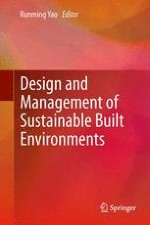2013 | OriginalPaper | Buchkapitel
12. Building Simulation
verfasst von : Runming Yao, David Lim
Erschienen in: Design and Management of Sustainable Built Environments
Verlag: Springer London
Aktivieren Sie unsere intelligente Suche, um passende Fachinhalte oder Patente zu finden.
Wählen Sie Textabschnitte aus um mit Künstlicher Intelligenz passenden Patente zu finden. powered by
Markieren Sie Textabschnitte, um KI-gestützt weitere passende Inhalte zu finden. powered by
